| The Evolution of Advertising in the US | |||
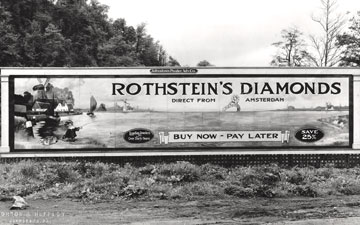 |
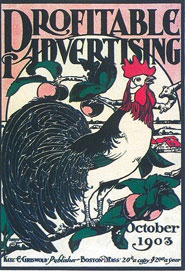 |
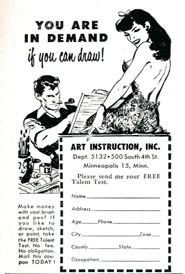 |
|
| Job Printers "Outdoor advertising was rampant by the mid-19th century. A job printer, a printer who undertook all works other than books and newspapers, was a significant presence at the beginning of the 19th century. With direction and advice from the client, the printer chose the type style and the ornaments from a huge variety available and organized all of the elements himself". 1
Above, a 1920 billboard in Johnstown, Pennsylvania. |
Designer / Conductor "The idea of designing as a separate activity from making characterizes the transition to a new profession. Historians who view graphic design as a part of printing history have often resorted to analogy in explaining the origins of the professional graphic designers. Clive Ashwin, emphasizing the role of technology in freeing printers from production, has compared the graphic design to the orchestra conductor, "who by degrees forsook his place at the keyboard and his level with the orchestra, to acquire a level which was literally and metaphorically above the means of production—the orchestra—and a baton which was both the tool of his trade and an insignia of his office and authority.2
|
Trade Journals
"The first graphic design trade journals appeared in 1911. Although many journals's began as advertises and forums for exchanging idea they evolved into vehicles for generating and transmitting professional ideals. Raising educational and craft standards, supporting workers and standardizing business practices, publicizing the importance of advertising to America's economy and raising aesthetic standards were all important issues ...3 Professional women were rare in the world of early advertising, but Kate Griswold, who eventually became publisher of Advertising Experience and several other women gained prominence in advertising. Above image has tag line "Kate E Griswold, Publisher. 1903 |
Commercial Artist
The ubiquitous term commercial art', was used by the turn of the century to describe illustration for mass publication but was soon applied more broadly to any non industrial design or, more broadly still, to what W. A. Dwiggins would refer to as "Graphic Design. ..."We use the word, 'Commercial Artist, Commercial Designer or Commercial Illustrator in describing mew whose artistic talents have been developed and devoted to commercial purposes. "Tensions caused by divisions between printer and designers appeared regularly in the trade press, "Forgetting the changes and improvements that have rapidly succeeded one another in print, he{the artist} declares that tech printer is 'merely a mechanic among machinery'." 4 |
| The First American Art Directors/ Well-Rounded Talents | |||
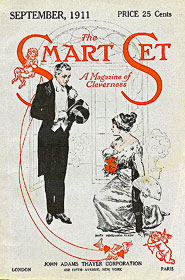 |
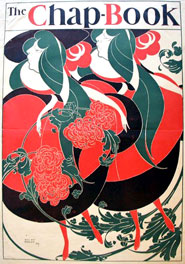 6 6 |
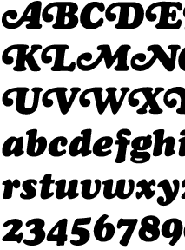 |
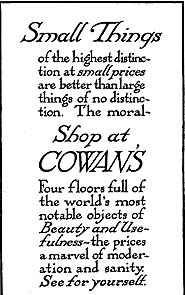 |
The Designer / Art Director A new breed of commercial artist and graphic designer came into the field through their skills in illustration, typography, and copy writing rather than printing. John Adams Thayer (b. 1861) "combined a series of skills in composing, advertising and management that became qualifications for a career in graphic design. by 1892 he designed the ads, hired artists, wrote copy and sold advertising space for the Ladies' Home Journal. Thayer is credited by contemporaries and later historians with substantial improvements in publication design."Thayer made up a set of rules for the Ladies Home Journal ad advertising columns that changed them from an ugly black mess produced by the desire of every advertiser to outdo all others and gave them instead an appearance pleasing to the eye."5
|
Will Bradley (1868–1962) Printmaker, illustrator, designer, art director, writer, filmmaker is how Bradley is described on a web site devoted to his career. Bradley began working in a printer's shop at the age of twelve where he was introduced to the arts of typesetting, advertisement, and layout. (His father had also been an illustrator but was killed in the Civil War). Bradley illustrated a number of posters to promote the literary magazine The Chap-Book. Shown above is one entitled "The Twins"—recognized as the first American Art Nouveau poster. Joining the American private press movement, Bradley founded the Wayside Press in Springfield in Massachusetts, and published a monthly arts magazine of art and literature periodical, Bradley: His Book. He remained an active and important member of the graphic arts world. |
Oswald Cooper (1879–1940) Oswald Cooper started out in printing as a printer's devil* but attended art school where he studied lettering under Frederic Goudy. With Fred S. Bertsch he formed the Chicago design firm of Bertsch & Cooper, Inc., Typographers. Cooper designed a number of faces including his most famous Cooper series, Cooper Old Style, Cooper Black which held up well in strong advertising headlines. *A printer's devil was an apprentice in a printing establishment who performed a number of tasks, such as mixing tubs of ink and fetching type. In addition are books, The Book of Oz Cooper (1949) and The Smith College Library Collection. Japan-based American graphic designer Ian Lynam has written about Oz Cooper's life. And Cheshire Dave has made a very entertaining video you might like to watch. |
Elizabeth Colwell (b. 1881-) Because advertising was anonymous it is hard to know how many women worked in the field. Some had careers that merited mention including Elizabeth Colwell and Elizabeth Reed (b. 1876). "An inspection of Miss Colwell's works ...will show its suitability for commercial requirements, such as decorative treatment of artistic brochures and booklets. The examples of lettering shown in the advertisements are exactly in keeping with the nature of a firm's business from the viewpoints of layout and style of letter employed. It has been an axiom among designers, although just why it is hard to say, that women cannot do good lettering. Miss Colwell, with many other women designers, offer direct proof to the contrary." 7 Above an example of her work. |
| Footnotes | |||
| 1 Mazur Thomson, Ellen, The Origins of Graphic Design in America, Yale University, 1997. 2 |
3 Advertising and selling, Volume 29,Albert A. Reed, Kate E. Griswold, James Barrett Kirk, George French, Leroy Fairman, 1920 4 |
5 Ibid, p. 82. 6 |
7 Rouiller, Alice, The Work of Elizabeth Colwell.The Graphic Arts, Volume 4 Henry Lewis Johnson - Art - 1913, p 239. |
| Copyrights | |||
| ©Designhistory.org 2011 | For Permission Info click here | ||
